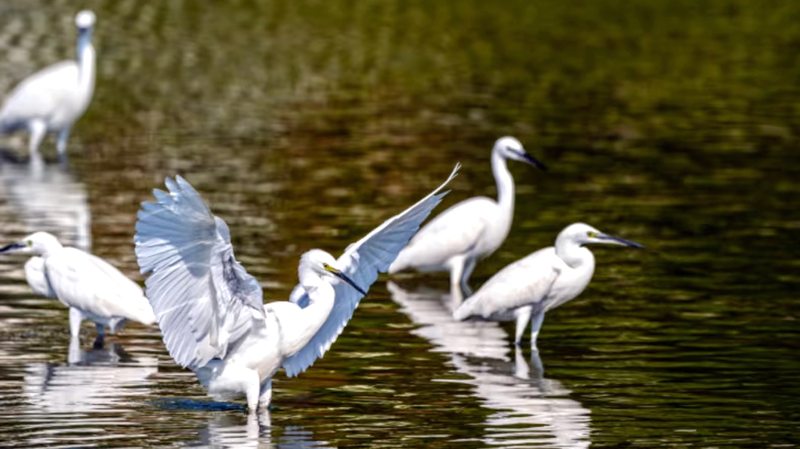Each winter, thousands of migratory birds wing their way to Changjiang Haiwei National Wetland Park on Hainan's southern coast. This coastal freshwater marsh, one of the few of its kind on the Chinese mainland, weaves together wetlands, grasslands, mudflats and mangrove belts into a vital stopover for species traveling along the East Asia-Australia Flyway.
Park rangers and researchers have recorded 212 bird species here, including three under first-class national protection and 39 under second-class. From elegant herons to tiny sandpipers, these arrivals transform mudflats into bustling runways at dawn, offering a front-row seat to nature's rhythms.
Biodiversity monitoring—powered by daily patrols, drone surveys and community-based sightings—regularly uncovers new species, highlighting the park's dynamic ecology. “We've seen a steady rise in species diversity over the past decade,” says a local conservation manager, “proof that habitat restoration efforts are paying off.”
For young global travelers and digital nomads, Haiwei offers immersive experiences. Guided birding walks, citizen science workshops and kayak tours through mangrove channels bring you close to the action while supporting sustainable tourism and local livelihoods.
As climate shifts and development pressures mount, Changjiang Haiwei stands as a case study in balancing human activity with nature. Its success underscores the power of community engagement and data-driven strategies to safeguard migratory bird corridors—and inspires changemakers worldwide.
Reference(s):
Changjiang Haiwei National Wetland Park: A key bird habitat in Hainan
cgtn.com




